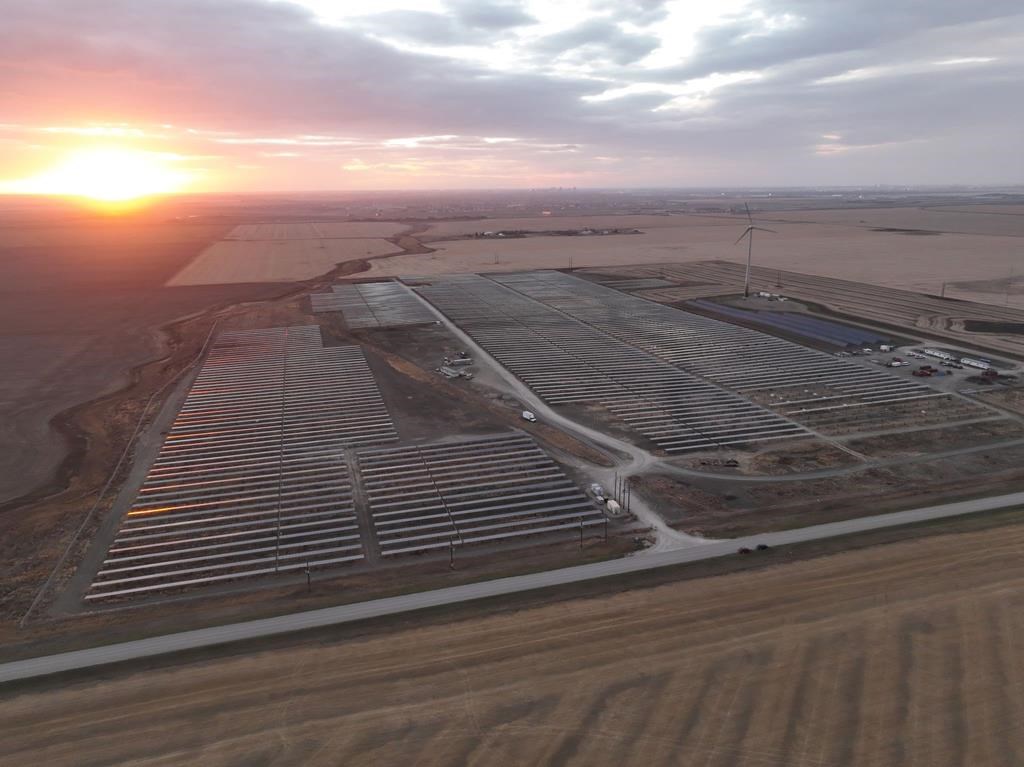A 2020 report by the nonprofit organization Indigenous Clean Energy identified 197 medium-to-large-scale renewable energy generation projects involving indigenous peoples. The organization’s executive director, Chris Henderson, says Aboriginal participation will only increase as Canada seeks to produce clean energy to meet its environmental goals.
In his opinion, Canada’s energy and electricity sectors have always been dominated by big oil and gas companies and governments, but new technologies allow for greater diversification and the future of energy is “decolonized”.
In fact, he reckons that indigenous communities now own, co-own, or have a financial benefit arrangement for nearly 20% of Canada’s power generation infrastructure.
“They’re the largest owners of assets outside of utilities,” he says.
Cowess’s First Nation’s $21 million Awasis solar project is connected to Saskatchewan’s grid and can power an average of 2,500 homes per year. Over its estimated 35-year lifetime, the solar park is expected to reduce greenhouse gas emissions by 350,000 tons, equivalent to the emissions of more than 70,000 petrol-powered cars driven for a year.
Other projects include the Meadow Lake Tribal Council Bioenergy Center, also in Saskatchewan, which will generate green energy from wood waste from nearby sawmills. In Nova Scotia, Membertou, Paqtnkek and Potlotek are First Nations partners in what will be the first green hydrogen and ammonia project in North America. In Ontario, the Oneida Energy Storage Project, developed in partnership with the Six Nations of the Grand River Band and recently approved, will become the largest battery storage project in Canada.
As part of its commitment to be carbon neutral by 2050, the Canadian government has set a goal of achieving a carbon neutral power grid by 2035.
Experts say such a goal would require tens of billions of dollars in public and private investment, and it seems clear that indigenous communities — as landowners and holders of treaty rights — are poised to reap an important share of those economic benefits.
Private companies have been working with indigenous communities on energy infrastructure projects for decades. But early deals usually included securing construction jobs or other financial benefits for the community.
Indigenous communities are now claiming the right to participate as full owners. For example, Cowesses owns 95% of the Awasis solar project with an opportunity to become full owner after five years.
Significant federal financial support is available for Indigenous-led clean energy projects. Awasis received $18.5 million from the federal government. However, Henderson notes that many other clean energy projects are the result of agreements between Indigenous communities and private companies, and are funded entirely by private capital.

Extreme problem solver. Professional web practitioner. Devoted pop culture enthusiast. Evil tv fan.




;Composite=(type=URL,url=https://images.radio-canada.ca/v1/assets/elements/16x9/outdated-content-2021.png),gravity=SouthEast,placement=Over,location=(0,0),scale=1)


